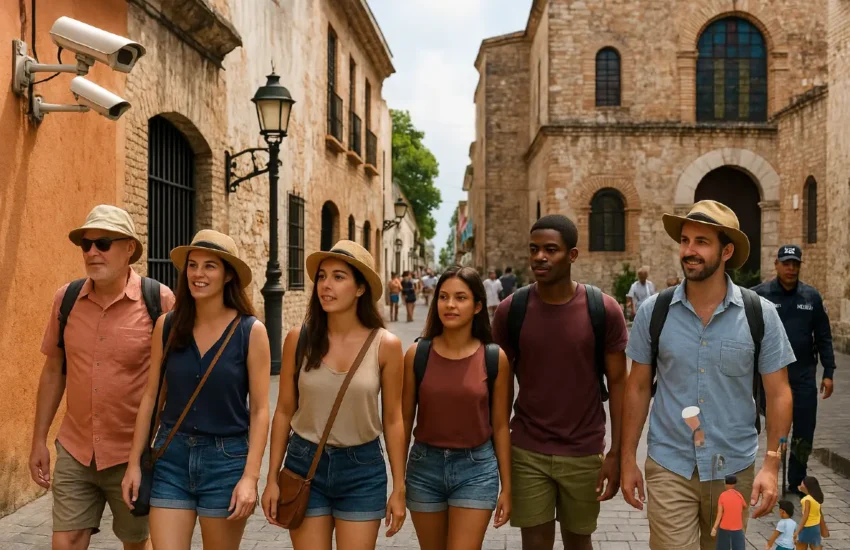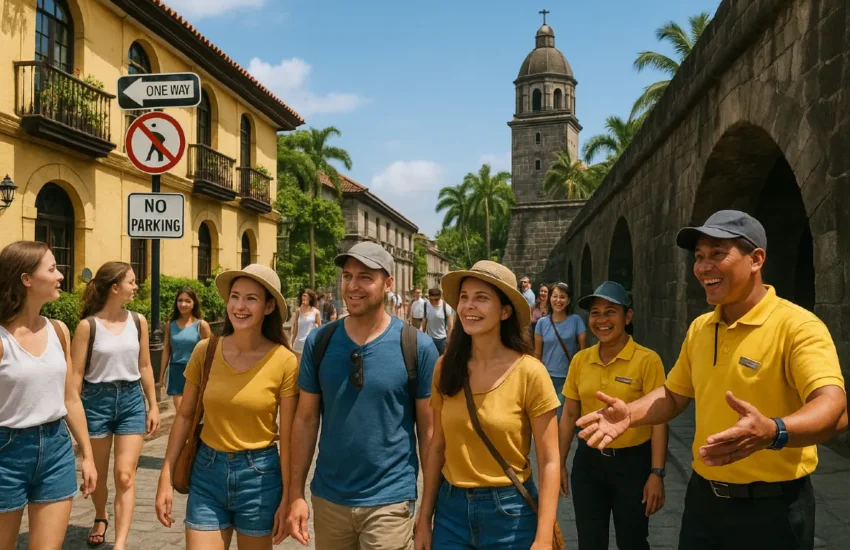The Real Cost of Living in Mexico in 2025
The low cost of living in Mexico draws thousands of expats and digital nomads yearly. Many find they can cut their expenses by 50-70% compared to their home countries. The same $800 that barely covers rent in most US cities can fund an entire lifestyle in Mexico. The numbers tell the story – Mexico’s cost of living sits 43.4% lower than the United States, and rent costs 63% less on average.
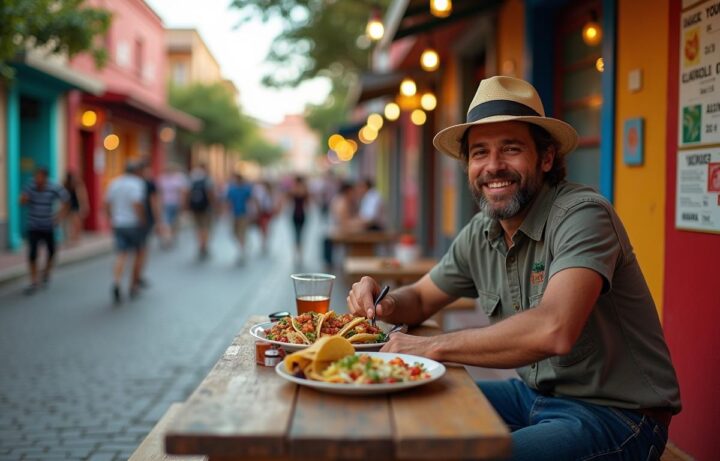
A single person needs about $653 monthly to live comfortably in Mexico, not counting rent. This makes an $800 budget realistic and achievable. Mexico City’s costs run 11% above the national average, yet still offer great value compared to Thailand or other expat hotspots. Daily expenses showcase the stark difference between Mexico and the US. Doctor visits cost $30-50 versus America’s $150-300. Monthly transit passes cost $20-30 instead of $100+. A single person’s grocery bills typically range from $200-300 per month. These numbers appeal strongly to retirees who see their savings stretch substantially further south of the border.
The Real Cost of Living in Mexico: Setting Expectations For 2025
Mexico’s economy continues to evolve as we move into 2025. Private sector analysts have updated their expectations. They now project inflation at 3.83% and expect economic growth to slow to 1% for the year. These changes affect the cost of living in Mexico and influence everything from housing to daily expenses.
Understanding the $800 Budget in Dollars
An $800 monthly budget in Mexico for 2025 needs careful planning. Recent data shows a single person in Mexico spends about $982 per month. This makes an $800 budget tight but manageable in certain areas.
Here’s what an $800 budget in 2025 typically covers:
- Simple housing in smaller towns or shared accommodations
- Modest food expenses (cooking at home and occasional street food)
- Simple utilities and internet
- Limited transportation costs
- Minimal entertainment expenses
Cities like Morelia ($765/month), Culiacan ($795/month), and Leon ($812/month) rank among the most affordable major cities for singles. An $800 budget works well in these locations, especially if you live frugally or like a local.
A typical expense breakdown shows housing costs at $446/month for singles. This leaves $354 for other expenses—utilities ($42), internet ($28), food ($200), transportation ($30), and miscellaneous costs ($54).
How The Cost of Living in Mexico vs USA Has Changed
The price gap between Mexico and the United States remains wide in 2025, though it has narrowed slightly. Living costs in the United States are 76.6% higher than in Mexico (excluding rent). Rent prices show an even bigger difference at 170% higher.
The cost differences remain clear across several categories:
- Restaurant prices: 79.7% higher in the US
- Grocery costs: 75.5% higher in the US
- Local purchasing power: 213.2% higher in the US
Mexico offers better value in dollars compared to Thailand and other expat hotspots. The cost of living index stands at 34.5 in Mexico versus 64.9 in the United States.
North American expats benefit from the current exchange rate (about 19.5 MXN to 1 USD). The Mexican government plans to reduce its fiscal deficit from 5.9% to 3.5% of GDP in 2025. These changes might affect inflation and service costs.
Mexico City’s costs have risen faster than other Mexican cities. A single person now needs about $1,288 monthly. This amount is 31% above the national average but remains affordable for a world-class capital.
Americans can save nearly $25,000 yearly by living in Mexico compared to a similar lifestyle in the US. This makes Mexico an attractive option for people seeking financial freedom.
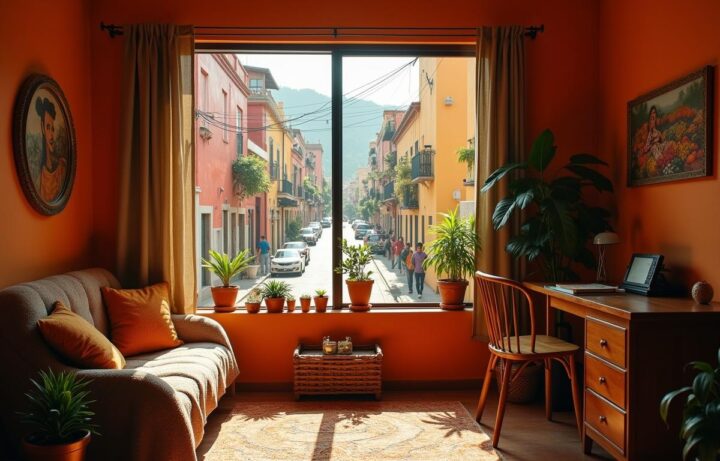
Housing Options in Mexico: What $800 Gets You
Reasonable housing prices make Mexico an attractive place to live. You can find various living arrangements with an $800 budget based on your priorities and needs. The housing scene looks different as you move around the country, with options that fit every budget and lifestyle.
Renting in Mexico City vs Smaller Towns
Living costs in Mexico change a lot between big cities and small towns. A one-bedroom apartment in Mexico City’s center costs about 12,419 MXN ($637) monthly. The same apartment outside the center drops to 8,662 MXN ($445). This means an $800 budget gets you a nice place in most parts of the capital.
Small towns give you better value for your money. Places like Morelia, Leon, and Culiacan rank among the most budget-friendly cities. Monthly rents there run about $271, $288, and $292. These towns make perfect sense if you’re retiring on a budget or want your dollars to go further.
Your choice of neighborhood makes a big difference in price. Mexico City’s fancy areas like Polanco or Condesa saw rent jump 20-30% in 2023 as these areas became trendier. The priciest areas like Cuauhtémoc (including Roma and Condesa) cost around 22,911 pesos ($1,336) monthly. Budget-friendly neighborhoods like Tláhuac cost just 4,722 pesos ($275).
Shared Housing and Studio Apartments
Shared housing and studios are great options if you’re watching your budget in Mexico. Coliving spaces have become popular with digital nomads and students. These shared living spaces usually cost between $200-$500 monthly, based on location.
Studio apartments in central Mexico City run about 17,000-22,500 pesos ($850-$1,125). Websites like Dada Room and Roomies-Roommates DF help people find shared apartments. Rooms there cost $300-$500 monthly. This setup works well if you’re single and want to save money compared to places like Thailand.
New renters should watch out for scams. Always see a property in person before sending money. Be careful if prices look too good to believe. Learning Spanish helps you find better deals too.
Hidden Costs Like Utilities and Maintenance
Living costs in Mexico include more than just rent. A typical apartment’s utilities cost about 1,201 MXN ($62) monthly. Electric bills come every two months and can jump up fast if you use air conditioning often.
Water bills change by area but usually cost 500-1,000 pesos ($25-$50) monthly for regular systems. High-speed internet costs around 530 MXN ($27) monthly.
Condo maintenance fees often surprise people comparing costs between Mexico and the USA. These fees run from 30 to 100 MXN per square meter monthly. This adds $100-$300 to monthly costs for a regular apartment. The fees usually cover security, upkeep of shared areas, and sometimes water.
An $800 monthly housing budget covers rent and utilities easily in most Mexican cities except fancy parts of Mexico City. This makes Mexico a smart choice if you want to get the most from your housing money in 2025.
Food and Groceries: Eating Well on A Budget
Learning about Mexican food markets shows why Mexico’s cost of living attracts food lovers on tight budgets. You can eat well on an $800 monthly budget if you make smart shopping and dining choices.
Shopping at Local Markets vs Supermarkets
Mexico’s cost of living becomes especially advantageous when you shop at traditional markets instead of chain supermarkets. These shopping options fall into four main categories:
- Mercados (permanent markets): These places have fresh produce, meats, and cheeses at prices 30-50% lower than supermarkets
- Tianguis (weekly pop-up markets): These markets show up on specific days with even better prices on fruits and vegetables
- Tienditas (neighborhood corner stores): Family-owned shops that stock simple necessities
- Supermarkets: Chains like Walmart, Soriana, and Chedraui where you can find imported goods
Supermarkets sell avocados at around 63 pesos ($3.25) per kilogram, and mangos cost about 42 pesos ($2.17) per kilo. Local mercados typically sell these items 20-30% cheaper. Singles looking to retire in Mexico can save money and experience authentic culture by shopping at these markets.
Street Food and Affordable Dining Options
Street food gives you better value for your dollars compared to Thailand or other prominent expat destinations. A filling lunch at a “comida corrida” (set menu) costs between $4-8 per person. Street tacos range from 22-41 pesos ($1.50-2.50) each based on their filling and location.
Other budget-friendly street food options are available:
Blue corn quesadillas cost around 25 pesos ($1.50). Tlacoyos (masa cakes filled with beans or cheese) and gorditas (thick stuffed tortillas) stay in this price range. Elote vendors (corn on the cob with toppings) charge approximately 20-30 pesos ($1-1.50).
Monthly Grocery Costs for A Single Person
A single person’s average monthly grocery budget in Mexico runs about $200-300. Smart shopping at mercados makes this amount sufficient for a month’s food.
Basic monthly grocery costs look like this:
- Milk (1 gallon): 107 pesos ($5.96)
- Eggs (dozen): 45 pesos ($2.49)
- Bread (loaf): 45 pesos ($2.04)
- Chicken (1 pound): 65 pesos ($3.31)
- Tomatoes (1 pound): 16 pesos ($0.75)
Mexico City’s grocery costs run slightly higher, with food inflation reaching 3.67% in March 2025. In spite of that, these rates stay nowhere near U.S. prices, which are 75.5% higher. Your savings grow when you buy local products instead of imported goods, which helps stretch your retirement budget further abroad.
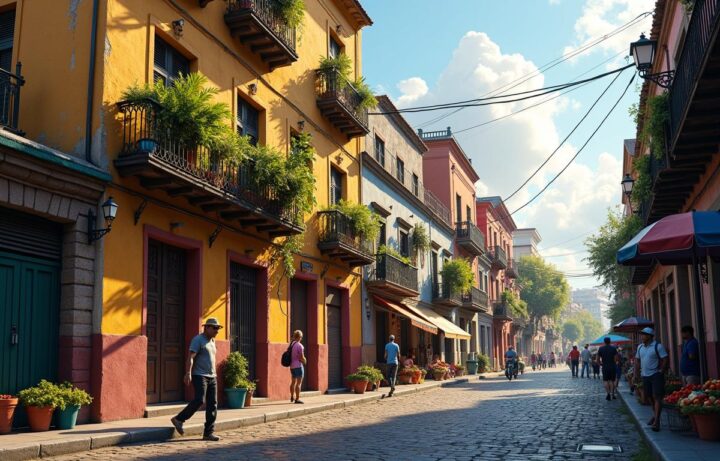
Transportation and Daily Expenses: Moving Around Smartly
Affordable transportation is a key part of Mexico’s living costs, and your daily travel expenses can affect your budget by a lot. Mexico has cheaper options to move around cities and travel between them compared to other countries.
Public Transport Costs in Mexico City and Beyond
Mexico’s cost of living becomes more attractive when you look at public transportation prices. A one-way metro ticket in Mexico City costs just 12 pesos ($0.60). This makes it one of the world’s cheapest metro systems. Monthly transit passes cost around 500 pesos ($25). These rates work great for anyone who wants to retire on a budget.
Mexico City plans to spend MXUSD 23 billion (USUSD 1.14 billion) on its Metro system in 2025. The city will add three new Cableway lines and expand the Metrobús network. You can travel between major cities in Mexico by comfortable intercity busses. A 4-5 hour trip costs about $20-30.
Owning A Scooter or Bike
Many expats buy scooters as a cheaper option than public transit. New scooters cost from 15,000 pesos ($750), and Italika offers some stylish models. Scooter owners usually spend less than 200 pesos ($10) on gas each month. This cuts down Mexico’s average transportation costs.
Registration fees are about 2,000 pesos ($100), and insurance costs around 500 pesos ($25) yearly. New buyers should check their paperwork carefully. Second-hand purchases need proper ownership transfer documents.
Saving Money Compared to Thailand and Other Countries
Mexico’s taxi start rates are 145% higher than Thailand’s. However, local transportation in Mexico is 17.5% cheaper than Thailand. Monthly transportation passes in Mexico cost 20.7% less in dollars.
Uber and other ride-hailing services run in most Mexican cities. Fares start at 50-85 pesos ($2.50-4.25). These rates are nowhere near what you’d pay in the United States. This makes daily transportation quite affordable for retirees who want to make their money last longer.
Healthcare, Entertainment, and Extras: Can You Still Enjoy Life?
Life should be enjoyable while you save money. Mexico’s cost of living lets you do both – take care of necessities and have fun with extra activities.
Affordable Healthcare Options for Expats
Healthcare in Mexico gives excellent value when compared to the US. You’ll pay about 350-500 pesos ($20-25) to see a specialist without insurance. Dental care won’t break the bank either – a full teeth cleaning with whitening costs around $40. Expats have several options to get detailed coverage:
The public IMSS program runs $320-560 per year based on your age. Many people choose this simple coverage option for retirement. INSABI serves as another option that gives free healthcare to those without social security.
A single person pays an average of $1,700 yearly for private insurance with a $500 deductible. Quality care in English is common, especially at private facilities, since many Mexican doctors complete part of their training in the US or Europe.
Entertainment and Leisure Activities in Dollars
Mexico’s entertainment scene thrives with a market value of $28 billion in 2023. You’ll find plenty of fun activities whatever your budget might be.
Restaurant prices for domestic beer hover around $3. Movie tickets cost about 90 pesos ($4.50). Museum visits are affordable too – Mexico City’s Anthropology Museum charges just $12.
Mexican households spent 1102.9 billion pesos on leisure in 2023. This shows how much people value entertainment, even though Mexico City’s living costs run higher than other areas.
Stretching Your Budget Without Sacrificing Fun
Mexico offers countless ways to enjoy life on a tight budget. Some activities cost nothing at all. Puerto Vallarta’s Malecon gives stunning ocean views for free.
The difference between US and Mexican living costs shows big savings in fun activities. Tourist spots often cost less during weekdays or off-season times. Cultural events like Dias de los Muertos let you experience local traditions without spending much.
Natural attractions give you exceptional experiences at little cost. Beaches, mountains, and forests await your exploration. The leisure industry should grow by 1.71% CAGR over the next five years. This growth suggests more entertainment choices for expats compared to places like Thailand.
Cost of Living in Mexico Frequently Asked Question
How Much Does It Cost to Live Comfortably in Mexico in 2025?
The cost of living in Mexico varies depending on location and lifestyle. In 2025, a single person can live comfortably on about $800-$1000 per month in many areas, covering rent, food, utilities, and basic entertainment. However, costs may be higher in popular tourist destinations or major cities.
What Kind of Housing Can $800 Get You in Mexico?
With an $800 budget, you can typically rent a decent apartment or small house in many Mexican cities and towns. In smaller towns, this amount might cover a nice one-bedroom apartment, while in larger cities like Mexico City, it could get you a studio or shared accommodation in less central areas.
How Do Grocery and Dining Costs Compare to the US?
Grocery and dining costs in Mexico are significantly lower than in the US. Local markets offer fresh produce at very affordable prices, and street food provides tasty, inexpensive meals. A single person can expect to spend about $200-$300 monthly on groceries, which is roughly 75% less than equivalent costs in the US.
Is Healthcare Affordable For Expats in Mexico?
Healthcare in Mexico is generally very affordable for expats. A visit to a specialist costs around $20-$25 without insurance. Private health insurance for a single person averages about $1,700 annually. There are also public healthcare options available at even lower costs, making medical care accessible on various budgets.
Can You Enjoy Entertainment and Leisure Activities on A Budget in Mexico?
Yes, there are many affordable entertainment and leisure options in Mexico. Cinema tickets cost around $4.50, domestic beers at restaurants are about $3, and many cultural sites have nominal entrance fees. Additionally, there are numerous free activities like exploring beaches, parks, and local festivals, allowing for an enjoyable lifestyle even on a modest budget.
What are The Most Affordable Cities to Live in Mexico?
Cities like Mérida, Guanajuato, and Oaxaca offer a lower cost of living compared to major hubs like Mexico City or Cancún. These areas provide affordable housing, dining, and entertainment while maintaining a high quality of life.
How Much Do Utilities Typically Cost in Mexico?
Monthly utility costs, including electricity, water, and internet, average around $100-$150 for a standard apartment. Costs may vary based on location and usage, with higher bills in hotter regions due to air conditioning.
Are Transportation Costs in Mexico Budget-friendly?
Yes, public transportation in Mexico is very affordable. A bus or metro ride costs around $0.50 to $1, and taxis or ride-sharing services are also reasonably priced. Owning a car is also less expensive than in many other countries.
Can Expats Find Work Opportunities to Supplement Their Income in Mexico?
Yes, expats can find work opportunities in Mexico, particularly in industries like tourism, education, and digital services. However, it’s important to secure the appropriate work visa to stay legally employed.
How Does The Cost of Dining Out Compare to Cooking at Home in Mexico?
Dining out can be very economical, with local restaurants offering meals for as low as $5. However, cooking at home using fresh produce from local markets can be even more cost-effective, making it easy to save money on food.

